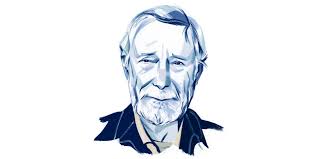Have you ever seen the words poet written about in the books of tang nyt and wondered what that really means? This phrase shows up in crossword puzzles, book reviews, and even New York Times culture pages. It sounds old and fancy, but it’s actually super interesting. These poets lived in China over 1,000 years ago, during the Tang Dynasty. They didn’t just write pretty poems — they changed the way people thought about nature, love, war, and even government. And guess what? The New York Times still writes about them! These poets were kind of like the pop stars of their time, and their words still shine today.
When we say poet written about in the books of Tang NYT, we’re talking about famous writers like Li Bai, Du Fu, and Wang Wei. These names pop up again and again because their words touched hearts, made people think, and told the truth in hard times. Li Bai loved wine and freedom. Du Fu cared about poor people and war. Wang Wei wrote peaceful poems about mountains and rivers. The New York Times often compares them to big Western names like Shakespeare or Wordsworth. Their poems are also full of deep feelings, but they’re short and calm, kind of like haiku. Many schools now teach these poets in English too, and NYT reviews help people understand what their words mean today. If you’ve never read Tang poems before, don’t worry — we’ll make it super simple and fun.
Why These Tang Dynasty Poets Still Show Up in the New York Times
The Tang Dynasty happened a long time ago in China, but its poets are still famous today. They wrote poems about real feelings—like being happy, sad, lonely, or peaceful. The New York Times (NYT) talks about them because their poems still feel special, even after hundreds of years. These poets didn’t just write for fun—they shared ideas about love, war, family, and nature. The NYT loves telling stories about them because their poems are full of heart and history. People today read their work to relax, learn, or even feel inspired. Schools and libraries also teach these poems. It’s like hearing an old voice that still makes sense in our modern world. The NYT helps new readers understand their meaning and why they matter so much, even today. That’s why they keep showing up in NYT stories and crossword puzzles.
How Tang Poets Touched the World — and Still Do Today
Poets from the Tang Dynasty didn’t just touch hearts in China—they reached the whole world! Their poems got translated into English, French, and many other languages. People in Europe and America started reading them in the 1800s. Soon, writers in the West began to copy their style—simple words, deep feelings. Even big names like Shakespeare and Rumi are often compared to Tang poets. Today, these old poems are in schoolbooks, college classes, and even New York Times reviews. Some people read them to feel calm, like Wang Wei’s peaceful nature poems. Others read Du Fu’s poems about hard times and kindness. These Tang poems are short, sweet, and full of feeling, so they fit well in our busy lives. They help us slow down and think. That’s how Tang poets still touch hearts across the world.
Li Bai to Du Fu: Meet the Poets Behind the Famous Tang Books
Li Bai and Du Fu are two of the most famous poets in Tang Dynasty history. Li Bai was like a free bird—he loved wine, the moon, and wild dreams. He wrote poems about stars, rivers, and magic. Du Fu was different. He cared about poor people, war, and being honest. His poems had deep meaning and truth. These two were friends, but their poems felt very different. Li Bai’s words were soft and dreamy. Du Fu’s poems were like stories about real life. Both are written about in the “Books of Tang,” which are like history books full of stories and poems. These poets were not just writers—they were voices for the people. That’s why the New York Times still talks about them. Their poems help us understand the past and feel something real even now.
What These Ancient Poems Teach Us About Life, Nature, and Feeling
Tang poems are small but powerful. They use simple words to talk about big things—like life, death, nature, and love. Li Bai’s poems make you feel like dancing with the moon. Du Fu makes you feel strong when things are hard. Wang Wei makes you feel quiet and peaceful. These poems teach us how to feel more and think deeper. They don’t shout, they whisper—and that’s what makes them special. Nature is a big part of Tang poems. Mountains, rivers, flowers, and seasons help show feelings in the poems. That’s why reading one is like taking a walk in a calm place. The poems remind us to stop, look around, and enjoy life’s simple things. The New York Times writes about them to help new people discover this quiet beauty and strong meaning that still lives in the words.
The Big Three: Why NYT Keeps Talking About Li Bai, Du Fu, and Wang Wei
Li Bai, Du Fu, and Wang Wei are the top three poets from the Tang Dynasty. They each had a special style. Li Bai was full of imagination and wrote wild, happy poems. Du Fu was serious and wrote about real problems like war and hunger. Wang Wei was quiet and peaceful, writing about nature and calm moments. The New York Times talks about these three poets a lot because they each speak to different readers. If you like dreamy poems, you’ll love Li Bai. If you want truth and care for people, read Du Fu. If you need peace and quiet, Wang Wei is for you. These poets are also easy to read and full of feelings. Their words are simple but deep. That’s why NYT keeps writing about them—they help people feel something true, even today.
From China to NYT: How the Tang Poems Were Translated for the World
At first, only people who knew Chinese could read Tang poems. But then, smart translators turned them into English and other languages. That’s how Tang poems reached the world. Translators like Burton Watson and Stephen Owen made books that the New York Times still talks about. These books helped people in America and other places learn about Chinese poems. Some translations are soft and poetic, while others try to stay very close to the original words. The NYT writes reviews about these translations and says which ones are the best for new readers. These poems are now in college classes, bookstores, and even online. Translating poems is hard because Chinese has tones and symbols, but translators try their best to keep the feeling. Thanks to them, the world can enjoy Tang poems—even if they don’t speak Chinese.
Conclusion
These Tang Dynasty poets wrote long ago, but their words are still alive today. Their poems help us feel calm, strong, or full of dreams. They teach us to look at nature, care for people, and enjoy quiet moments. That’s why the New York Times still writes about them.
Even if the poems are old, they are full of life. People everywhere are reading them again. And you can too! Pick a short poem, read it slowly, and feel what the poet felt. It’s like making a new friend from a very long time ago.
FAQs
Q: What does “poet written about in the books of Tang NYT” mean?
A: It means a famous Chinese poet from the Tang Dynasty that the New York Times has written about or reviewed.
Q: Who are the most famous Tang poets in the NYT?
A: Li Bai, Du Fu, and Wang Wei are the most well-known and often written about.
Q: Can I read Tang poems in English?
A: Yes! Many good translations are available online and in books.
Q: Why are Tang poems still popular today?
A: Because they talk about real life, nature, and feelings that still matter today.
Q: Where can I read Tang poems for free?
A: Try websites like JSTOR, Poetry Foundation, or NYT’s book review section.




